So, you want to learn to play the flutophone? Or was it the penny whistle, also known as the tin whistle? No, no, wait a minute, you want to play the slide whistle. Yeah, yeah, that’s it.
Joking aside, you are reading these words right now because you have at least a slight interest in one of the three instruments mentioned above.
Keep reading. In the end, you will understand why penny whistles are called penny whistles, the pros of flutophones for young children, and where to best play a slide whistle.
Here’s a selection of some of the best pennywhistles:
Has the finest sound among cylindrical tin whistles and is well worth the additional effort required to play it.
Comes equipped with a fingering chart and is available in the keys of C and D.
This Carbon Fiber Whistle is well worth it when you consider the stellar sound this whistle can produce.
Requires less air control and tends to be easier to play.
The Tin Whistle
Tin whistles are also known as penny whistles or flageolets. These small, high-pitched musical instruments are blown like a recorder and are made from brass, nickel, aluminum or plastic.
Unlike the recorder, tin whistles have six finger holes instead of seven. They are very easy to play and has the added benefit of an extremely low cost.
That does not mean that it is a toy or not worth your time. The tin whistle is worthy of any musical enthusiast and can produce a quality sound that surpasses other more expensive instruments.
What Can They Play?
Tin whistles can be used to play a wide variety of songs from simple slow airs to complicated jigs, reels and hornpipes. The possibilities are practically endless with this versatile little instrument.
Tin whistles are available in many different keys, but the most popular are C and D. If you are brand new to the world of tin whistles, you should purchase one in the key of D as it can be used with multiple compositions.
The varying materials used in the manufacture of tin whistles produce slightly different sounds. Brass, for example, has a more mellow tone than nickel.
History of the Tin Whistle
The tin whistle in its modern form is a variation of the fipple flute and is in the same family as the recorder, the tabor pipe and the Native American flute. Almost all ancient cultures had some form of the fipple flute.
The oldest surviving tin-whistle-like instrument dates back to 81,000 BC. By the 12th century, these flutes were available in a wide variety of sizes and pitches. The name was changed to the flageolet in the 17th century.
The modern tin whistle is native to the British Isles where the first factory-produced whistles were designed and manufactured by Robert Clarke in Manchester and New Moston, England. At this point, they were given the distinguishing name of Clarke London Flageolets.
The six-hole diatonic fingering system is standard for the tin whistle. The first whistle produced by Clarke was called the Meg. It was pitched in high A and was later produced in other keys to make it suitable for Victorian parlor music.
Common belief holds that the penny whistle was a toy for children or poor street musicians that were paid a penny by those who stopped to listen. But the name of the penny whistle was representative of the cost of the instrument — a single penny.
Because of its affordability, the tin whistle quickly became a common household instrument as ubiquitous as the harmonica and the guitar. (Wikipedia)
Most tin whistles of today are made of brass or nickel-plated tubing with plastic mouthpieces. In traditional English, Scottish and Irish music, the tin whistle is a commonly heard instrument.
Because they tend to cost under $10, they are an excellent introduction to the Uilleann pipes.
Where to Purchase
Although it is possible to purchase tin whistles cheaply, the best quality tin whistles cost hundreds of dollars and are designed and created by single individuals or a very small group of people rather than in a factory.
Most of factory-produced tin whistles will vary in quality. If you can try the whistle out before actually making the purchase, you will have a better opportunity to determine whether or not the whistle is worth your money.
Check the mouthpiece and the blade for loose bits of plastic left over from the molding process (the blade is the rectangular opening found on the top of the mouthpiece). Be sure to take a look at the finger holes as well.
Check the tone by bringing another instrument along or an electric tuner to see that it is in tune with itself. If you end up with any extra plastic on your tin whistle, it can be removed using either a jeweler’s flat file or a thin, sharp knife.
Tin Whistle Families
There are three main categories into which the tin whistle family falls: cheap cylindrical and mid-range conical. The most expensive whistles are handmade and can cost several hundred dollars apiece.
Cylindrical
There are a few types of cylindrical whistles:
Generation
The Generation is the standard tin whistle and can be found just about anywhere. Many top tin whistle players pick this brand over more expensive versions.
It is available in almost any key in brass or nickel-coated brass. The brass Generation has a sweet, intense tone that is slightly stronger in the nickel-coated version.
Feadóg
Feadóg whistles are made in Ireland and are reported to have a sweeter sound than the Generation tin whistle. Feadóg whistles are made of brass.
Oak
Oak tin whistles are produced in America and may be difficult to obtain in other countries. While it gives a sweet, mellow tone in the lower notes, it is difficult to play in the higher notes.
Conical
Conical tin whistles contain wooden blocks set in the mouthpiece that taper down to the bottom. These whistles are easier to play than cylindrical whistles and have a soft, whispery tone to them.
They require more tonguing and air than other types of tin whistles, especially in the second octave. The two inexpensive brands are the Shaw and Clarke models. Both of these brands together are available in D, C, A,F, low G and low D.
Expensive Brands
More expensive brands may be costly, but their sound is well worth the price. If you are an experienced player, you should definitely consider purchasing a high-end tin whistle.
How to Play the Tin Whistle
In order to achieve the best possible sound, you will need to be sure that you are holding the whistle properly. Below are three easy steps to playing the tin whistle.
Step One: How to Hold the Whistle
Hold your tin whistle downward at a 45-degree angle away from your body. Some people say it is best for your dominant hand to be on the bottom.
Even if you are a southpaw, you will find it easier to learn to play other whistles if you learn with your left hand over the top holes.
The tip of the whistle should be placed between your lips, not your teeth. Keep in mind that the pinky is not generally used except while playing certain notes or when using larger flutes.
Step Two: Making Music
The standard range of the high D tin whistle is two octaves from D4 (the first D above middle C) to D6.
In order to successfully play the lower octaves, you will need to use the proper technique. Practice by covering all the finger holes and blowing into the mouthpiece while saying “too” or “doo.”
The trick is blowing not too hard and not too softly. Sending too much air down the whistle will result in an unpleasantly harsh and squeaky sound.
Blowing too softly will result in a breathy and practically non-existent note. To move to C, uncover the first hole at the bottom.
If the sound is not correct, remove your finger from the first hole and try again. As you go higher, you will need to blow harder, but not too hard! If you do, you will produce a squeaky sound.
Upper octaves are played by covering all the finger holes and increasing the force of your breath.
Step Three: Practice Makes Perfect
As with any skill, you will need to practice in order to perfect yourself. With the tin whistle, you can easily play any piece of music transposed for a concert pitch instrument such as a piano, violin or flute.
Recommendations:
Before we move on to the flutophone, we’ll share are top picks for tin whistles.
Cylindrical Tin Whistle: Feadóg
Has the finest sound among cylindrical tin whistles and is well worth the additional effort required to play it.
Among the many cylindrical tin whistles available, the Feadóg brand is one of the top. The Feadóg has a sweeter tone than certain other brands including the Clark Sweetone and the Oak Classic.
The whistle is reported to be generally in tune with itself and is very sturdy. This tin whistle is very affordable for those who wish to get their feet wet without spending a fortune.

Credit: Feadóg Teoranta
Some beginners complained that the Feadóg requires a phenomenal amount of breath control to achieve a decent sound. Other brands such as the Oak may not be so difficult to play for a complete rookie.
However, the Feadóg has the finest sound among cylindrical tin whistles and is well worth the additional effort required to play it.
Conical Tin Whistle: Clarke Original
Comes equipped with a fingering chart and is available in the keys of C and D.
The favorite of tin whistle players for nearly 200 years, the Clarke Original has been called the “Stradevarius of Tin Whistles.” The tin whistle is finished by hand and is made of the original tin plate material.
The traditional conical bore of the whistle permits a clear sound with a flute-like quality. “Crisp,” “husky” and “responsive” are just some of the words used to describe its excellent sound.

Credit: Amazon.com
The Clarke Original can be played solo for friends and family and can just as easily hold its own in an orchestral ensemble. Children and adults alike can take pleasure in making music with this high-quality tin whistle.
The Clarke Original tin whistle comes equipped with a fingering chart and is available in the keys of C and D.
High-End: Pipe Makers Union Carbony
This Carbon Fiber Whistle is well worth it when you consider the stellar sound this whistle can produce.
For those of you who are really and truly serious about playing the tin whistle, consider the Carbony Tin Whistle by Pipe Makers Union.
Those who have invested in this whistle say the cheaper brands don’t even compare. The higher notes on cheaper tin whistles tend to be slightly painful to the ears of the musician.

Credit: Amazon.com
However, the Carbony Tin Whistle does not have the same ear-piercing quality with the higher notes. Because it is made from carbon, this whistle is extremely light.
The price for this brand is on the top end. The high cost, however, is well worth it when you consider the stellar sound this whistle can produce.
The Flutophone
Flutophones are extremely lightweight and are an excellent instrument for a budding musician. The flutophone is pitched in C and can play the entire chromatic scale.
Because it is simple to play, young children can especially benefit from this instrument.
The mouthpiece of the flutophone is detachable and is used to tune to flutophone. Pulling the mouthpiece out will lower the pitch while pressing it in increases the pitch.
Although they share many similarities, flutophones differ from recorders in several different ways:
Ease of Play
Flutophones require less air control and tend to be easier to play. Recorders require more air control and may not be suitable for very young children who are just starting.
If you begin your child on the flutophone, he or she may have an easier time switching to the recorder in the future.
Fair Tone Quality
Because they lack a built-in whistle in the mouthpiece, recorders have a smoother, sweeter sound than the flutophone.
However, enough practice will enable the musician to produce quality music with a flutophone.
Grooved Finger Holes
The finger holes of the flutophone feature grooves that make it simple for you to tell if you are covering the holes or not.
Recorders, on the other hand, have no indicators to let you know if the holes are covered.
Less Expensive
Flutophones are less expensive than recorders and may cost as little as $3.
Cousins of the Flutophone
Besides the recorder, there are two other instruments closely related to the flutophone: the tonette and the recorder.
The Tonette
The tonette was first designed in 1938 as a pre-band instrument. Nearly unbreakable, it was the perfect gift for active little boys and girls who wanted to play an instrument but couldn’t handle the responsibility of those that are more expensive or delicate.
It is easy to blow and has simple fingering. The pleasant flute-like sound has also featured in radio, TV and film for special novelty effects.
Felix Pappalardi used the tonette in “Wheels of Fire,” the third album by the British rock band Cream. The tonette was also popular with troops in WWII as an inexpensive way to pass the time.
The Precorder
The precorder is essentially a modified recorder designed to be easier for young children to play. The precorder produces a louder and sharper noise than a recorder and has a slightly different fingering method.
Specially designed wind chambers enable notes for both the high and low registers to sound cleanly and easily. The raised holes make it simple for small fingers to cover the holes properly.
Along with the flutophone, precorders are excellent first instruments. Because flutophones are not a “professional” instrument, they are relatively inexpensive and easy to find at many online music supply stores.
Our Flutophone Recommendation: Trophy 400
Requires less air control and tends to be easier to play.
The Trophy 400 is made of white plastic with a red plastic mouthpiece. This instrument is well-made and designed to withstand the eager hands of young children.

Credit: Amazon.com
Caution is advised when removing the mouthpiece as the red spacer ring may become damaged. The Trophy 400 is designed to compensate for quite a bit of over-blowing.
You can practically blow as hard as you like and still acheive a good sound. Those who played the flutophone in school five or six decades ago will have fond memories of this little instrument.
Slide Whistles
The slide whistle is also known as a piston flute, jazz flute, lotos flute, and swannee whistle. This wind instrument has a mouthpiece (fipple) like that of a recorder and a tube with a piston inside.
Slide whistles existed in Africa, Asia and Pacific islands in primitive bamboo and cane versions before factory-produced instruments became commonplace.
History of the Slide Whistle
This instrument dates back to the 1840s where it was first mass-produced and used in the Distin family concerts in England.
The whistle became common by the 1920s in the United States and has been used since that time in a wide variety of musical genres including jazz and pop.
Paul Whiteman used the slide whistle in his 1920 album “Whispering.” Louis Armstrong used it instead of his cornet for the chorus on several recordings with the Creole Jazz Band for King Oliver.
In the 1930s to the 1950s, the whistle became the favorite instrument of Paul “Hezzie” Trietch, a Hoosier Hot Shot founder.
Although the slide whistle is often thought of as a toy instrument, it has been used in “serious” music including operas and classical music.
The modern slide whistle is commonly used to create sound effects such as a glissando to suggest something rising or falling. However, it is not only used for sound effects on cartoon films. It is also possible to play “real” songs on the slide whistle.
Characteristics of the Slide Whistle
Unlike a stringed instrument, a slide whistle cannot be tuned in the normal sense of the word.
A stringed instrument is tuned by adjusting the tension of each string to achieve the proper pitch for each note. The same holds true for guitars, pianos, harps and violins.
Pre-Tuned
Slide whistles are pre-tuned to an individual key. The slide allows the mouthpiece and the body to be separated for cleaning or ease of carrying.
This slide also sets the distance between the mouthpiece and the holes in the whistle. When this distance has been set, the whistle plays according to the key set the by the manufacturer.
Unlike stringed instruments, slide whistles cannot be tuned one note at a time. Moving the slide up or down can completely alter the tuning.
Most slide whistles have a mark on the body of the slide to allow you to set the whistle according to the specifications of the manufacturer. In a pinch, the slide whistle could be used as a pitch pipe to tune another instrument.
Slide whistles are designed to play an even range between the 16 notes of two octave. Whistles manufactured from hard materials such as polymer, brass, aluminum and silver will not lose their tuning and have an excellent sound.
Due to the nature of plastic, polymer whistles play “warm,” making them the perfect instrument for playing in cold temperatures.
These whistles also dry out quickly and are ideal for damp locations. You could also consider a slide whistle made from specially treated wood for damp locations.
Why Your Whistle Plays Out of Tune
If your whistle ever plays out of tune, it is most likely dirty. It does not take long for an interior coating to develop in the same way plaque builds up on your teeth. To prevent buildup from affecting your playing, follow these simple steps.
1. Clean your whistle frequently between songs. Always swab the instrument out before putting it away for the day.
2. When cleaning the mouthpiece, insert the swab all the way to the mouthpiece plug. With the hole blocked, blow hard into the whistle at least twice to clean it. The finger holes can be cleaned with a Q-tip.
3. Every once in a while, you will need to clean the swab itself. Rinse it in gentle soap and water and allow it to stand and dry overnight. If you wish, you can spray it with Lysol to disinfect it.
Playing Tips:
Avoid Fans
If you play in an area with ceiling fans or air conditioning, you may find it difficult to achieve a good sound. Fans have a tendency to interrupt echoes and add irritating background noise.
Temperate Temperature
Temperature affects how well your whistle plays. If it is too cold, the moisture in the bore of the whistle will increase and inhibit the ability of the whistle to produce low notes on key.
Your whistle will play flat until it warms up again. Hot temperatures will cause your whistle to play sharp. Keep your whistle in the shade when playing outdoors during summer months.
Avoid Condensation
When playing a slide whistle, it is best if you can play without interruption. If you play a song or two, put it down and pick it up again 10 minutes later, condensation may form and affect your playing.
Hold
Keep in mind that the finger holes are important for producing accurate notes. Keep your fingers away from the holes when you’re not covering them to achieve the best possible sound.
Those who play instruments with finger holes may benefit from the use of hand cream on the fingertips. If the skin of your fingertips is kept soft and pliable, you will find it easier to play.
Tight Slide
Your slide whistle may have a joint to allow you to dismantle it. If so, be sure that it is tight and not leaky. A loose joint will cause to whistle to either play terribly off-key or not at all.
Try a little beeswax to seal the joint if needed. If you need to remove the joint for some reason, simply warm it up with a soft cloth dipped in hot water.
When replacing a wax seal, do not get the wax into the bore of the whistle. Buff the bore after performing any maintenance to ensure that it is clean before you start playing again.
Proper Breathing
Whistles in higher pitches can generally be played with only light breathing. Begin by taking an initial deep breath with smaller breaths throughout the song.
If you play low whistles, however, you will require more air to achieve the proper notes. These whistles must be sharply tongued to fill the larger bore.
A deep beginning breath is a must unless you wish to run out of air in the middle of a song. Practice finding strategic spots in a musical piece where you can take a breath without interrupting the song.
Where to Play a Slide Whistle
Places with natural echoes are excellent locations for playing slide whistles. Natural reverberations and return echoes are qualities lacking in slide whistles and can add an extra dimension to your playing.
Hard surfaces amplify sound and give an excellent return echo. Test your location by giving a clear shout. If you can get a fast return echo, you’ve hit on the right place.
Some cities and towns have bandstands set at strategic locations for musicians to play outdoors. These locations are perfect for an impromptu concert at any time of day. Maine, for example, has bandstands in nearly every town where community members gather to tell stories and to make music.
Don’t be surprised if you draw a crowd of people while playing your whistle outside. Consider filling your musical “tool box” with a collections of short and familiar tunes that you feel confident playing. A round of applause is sure to follow a well-performed piece of music on the slide whistle.
If you don’t have access to a bandstand, there are plenty of other places to play your whistle. Brick buildings and alleyways are excellent backdrops.
Just be certain that you are playing in areas where there are plenty of other people. Overpasses, flood culverts, your garage, an open porch…the possibilities are nearly endless.
Remember to play in an area with a relatively constant temperature of around 70 degrees to achieve the best sound with your whistle.
Stay away from fans and other sources of air disturbance to avoid altering the sound. Acoustic ceiling tile will most assuredly decrease the volume of your whistle by at least 30 percent.
Our Slide Whistle Recommendation: American Plating
For those of you who are totally gung-ho about cartoon sound effects, this whistle is the perfect instrument.

Credit: Drums on SALE
The classic slide whistle sound is sure to have everyone around you enchanted and laughing at the same time. The slide action is smooth and easy to operate and is sure to have your audience in tears from merriment.
The metal body of this whistle makes it sturdy and durable for many years of enjoyment.
Final Words
The type of instrument you choose to purchase will depend on how much you are willing to spend and your skill level.
If you are just starting out, please do not go and spend hundreds of dollars on a high-end instrument, especially if you are not certain about whether you will actually enjoy playing it. Start small and work your way up.
Perhaps the best advice I can give you is to simply enjoy yourself. Don’t force yourself to play an instrument that you absolutely hate. Find something you love that will take you to the stars and beyond.



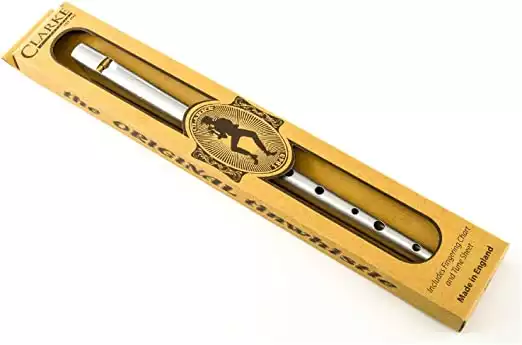
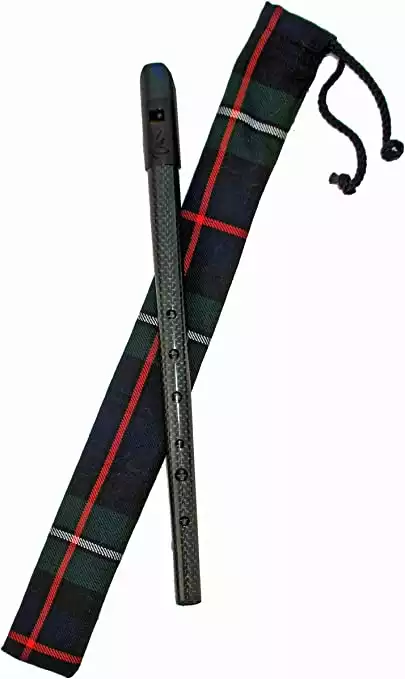

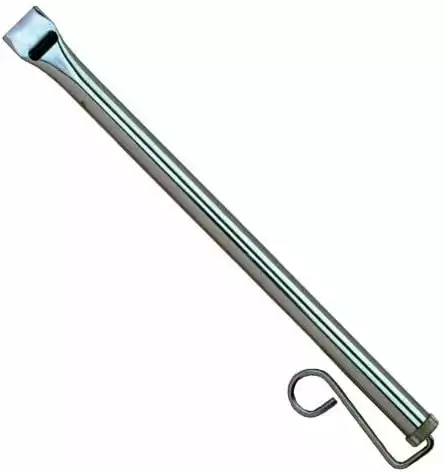



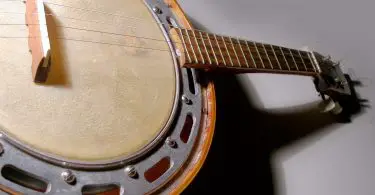
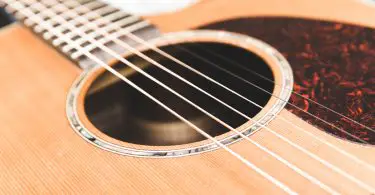

Start the discussion at talk.hearthemusicplay.com